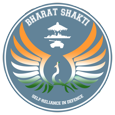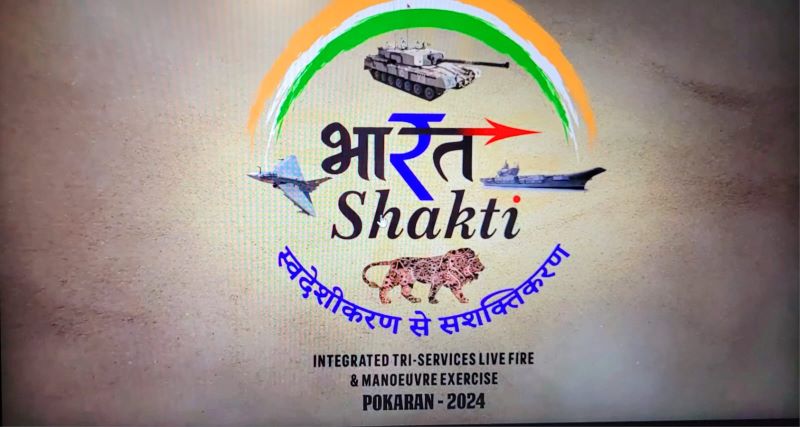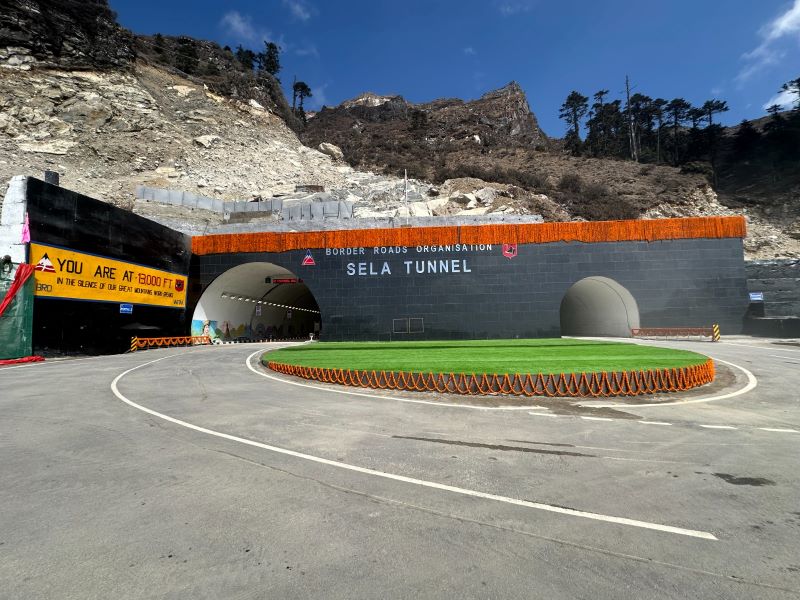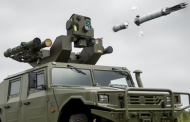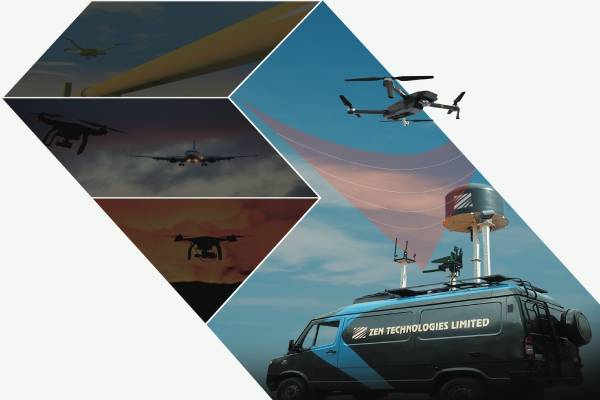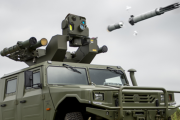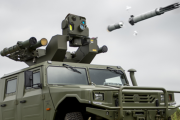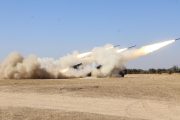The Indian Army will organise a major integrated tri-service war game exercise demonstrating the firepower might of Made-in-India weapon systems and platforms on March 12 at the Pokhran field firing range in the deserts of Rajasthan. The “live fire and manoeuvre exercise”, called “Bharat Shakti”, will be witnessed by Prime Minister Narendra Modi, Defence Minister Rajnath Singh, and the top military brass. It is aimed at showcasing indigenous weapons firepower and the military’s operational capabilities and readiness.
“The event will demonstrate the indigenous capability of the three Services through an Integrated Tri-Service Firepower and Manoeuvre Exercise for about 50 minutes in battlefield conditions, under the country’s Atmanirbhar Bharat initiative. This event will be followed by a Static Equipment Display,” stated Maj Gen C S Mann, ADG of Army Design Bureau.
The Army official emphasised that achieving maximum lethality and potency is possible only through a coordinated effort across multiple domains when confronting anticipated threats. To highlight the integration of domestically produced arms, ammunition, equipment, and systems within the Armed Forces, this Tri-Service Exercise, featuring Live Fire and Manoeuvre Demonstrations, has been named Bharat Shakti, he explained during a press conference held in New Delhi on Saturday.
“It will showcase the shock and awe that the three Services seek to achieve in an operational situation by employing the manoeuvre and fighting capabilities effectively. Broadly, it will also involve the establishment of an Intelligence Surveillance and Reconnaissance grid, Interdiction and Shaping Operations by Aerial Platforms, Firing of Long Range Vectors, manoeuvre by Mechanized Forces and movement of Infantry in Protected Mobility Vehicles,” Maj Gen Mann said.
The demonstration will include a wide range of technology domains, such as indigenous aircraft, helicopters, torpedoes, unmanned aerial systems (UAVs), counter-unmanned aerial systems, AI/autonomous systems/robotics, armament, ammunition, communication systems, survival/protection, alternate power solutions, 3D-printed bunkers, operational logistics, mobility, and training simulators, the official stated.
As the lead service for the mega event, the Army official disclosed that major equipment/weapon systems to be demonstrated include LCA Tejas, ALH Mk-IV, Light Utility Helicopter (LUH), Lightweight Torpedo, Autonomous Cargo-Carrying Aerial Vehicle, Mobile Anti-Drone System, T90 Tanks, BMP-II, Artillery Platforms such as Dhanush, Sharang, K9 Vajra and Pinaka, Swathi Weapon Locating Radar, UAV-launched precision-guided munition, Quick-Reaction Fighting Vehicles, and Drones of various types, including Logistic Drones.
“The static display will primarily involve standalone equipment that cannot be part of the demonstration. It will also include equipment which may be common to the Fire and Manoeuvre Demonstration but the capability and technical specifications of which can only be showcased in a static display. Important/major items indigenised for import substitution will also form part of the static display,” he said.
The top army official explained the tri-services integration and said that the most important aspect is communications. Therefore, jointness in tri-service communication will be showcased by the seamless integration of services-specific Information and Communication Technology (ICT) networks and Tri-Service organisations.
“Synergised joint operations will be decisive in the Indian context. Through the Live Fire and Manoeuvre Demonstration, Tri Services’ operational capabilities to counter any threat, leverage indigenous capability, and undertake conflicts in the face of global upheavals will be showcased,” Maj Gen Mann concluded.
Transformation through Modernisation and Technology Infusion: Swadeshikaran Se Sashaktikaran
Talking about the strides taken by the armed forces under the government’s policy of Atmnirbharta (self-reliance) in defence production, the top official said “the announcement of Make in India was a watershed moment, wherein the year 2020 brought about a paradigm shift with the launch of Atmanirbhar Bharat Campaign. The campaign proved to be a catalyst for transformation in indigenous R&D, adoption of niche technology and establishment of indigenous manufacturing eco system, ushering in the manifestation of Bharat’s quest for self-reliance”.
“This is evident from the fact that the global share in Indian Armed Forces Capability Development projects has steadily declined, whereas the share of the domestic component has increased considerably. Specific to the last year, i.e., in 2023, subscribing fully to the Government’s objective of Atmanirbhar Bharat, 98% of contracts have been concluded with Indian Industry,” he added.
Numerous schemes and projects have received Approval of Necessity (AoNs) in the past two fiscal years, favouring the Indian industry. This development is expected to enhance indigenisation and yield significant positive effects cumulatively over the next 5-10 years, he hoped.
He noted that this is the rationale behind the concentrated efforts of all three Services on Transformation through Modernization and Technology Infusion via indigenous methods, aligning with our shared goal of achieving self-reliance and empowerment, i.e., Swadeshikaran Se Sashaktikaran.
Ravi Shankar

